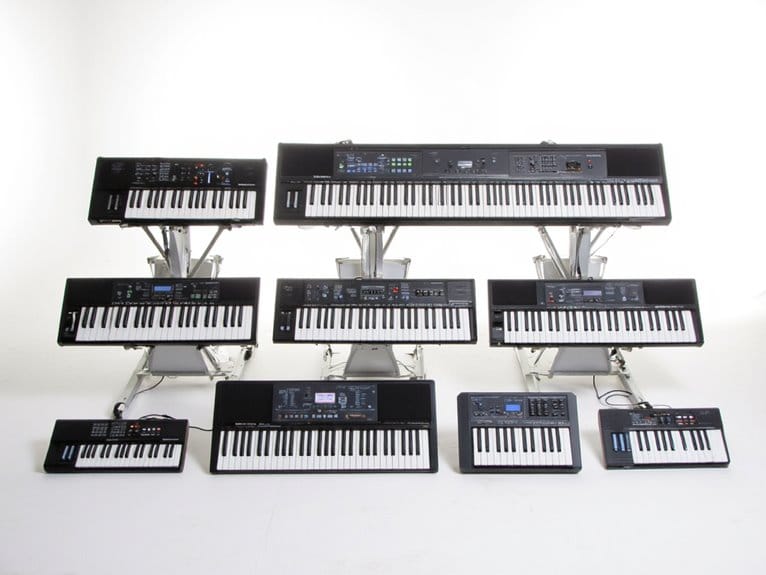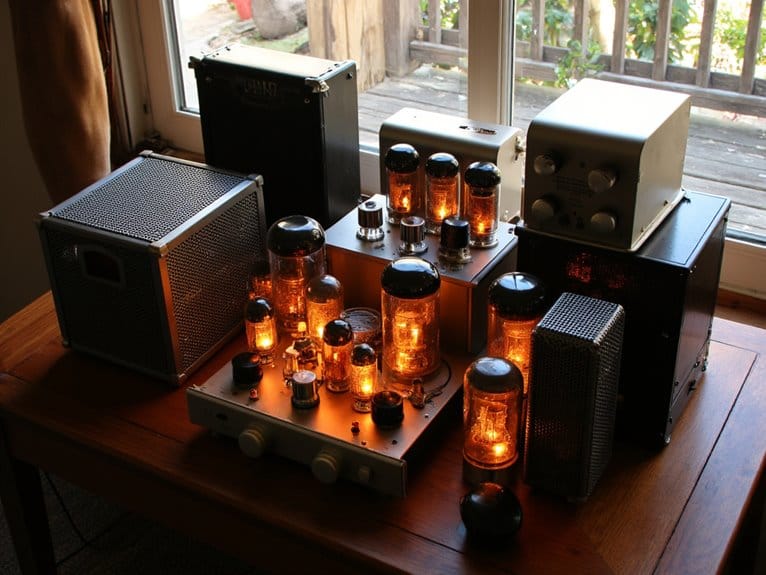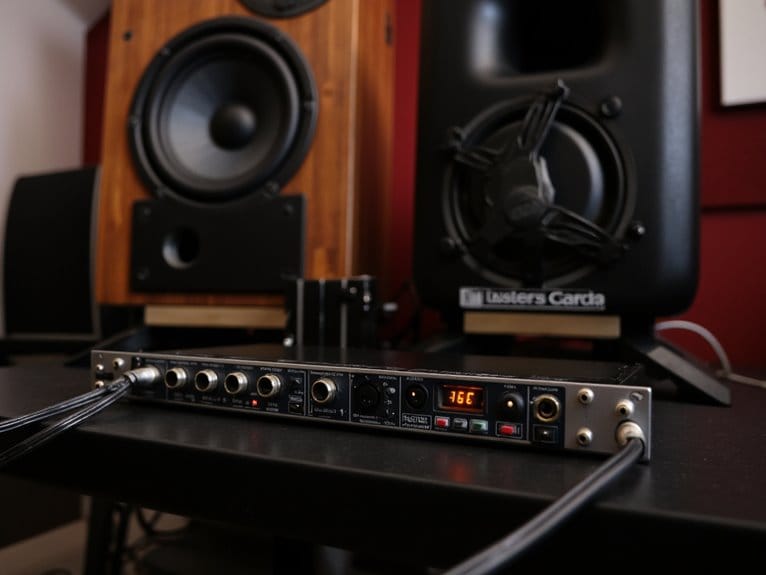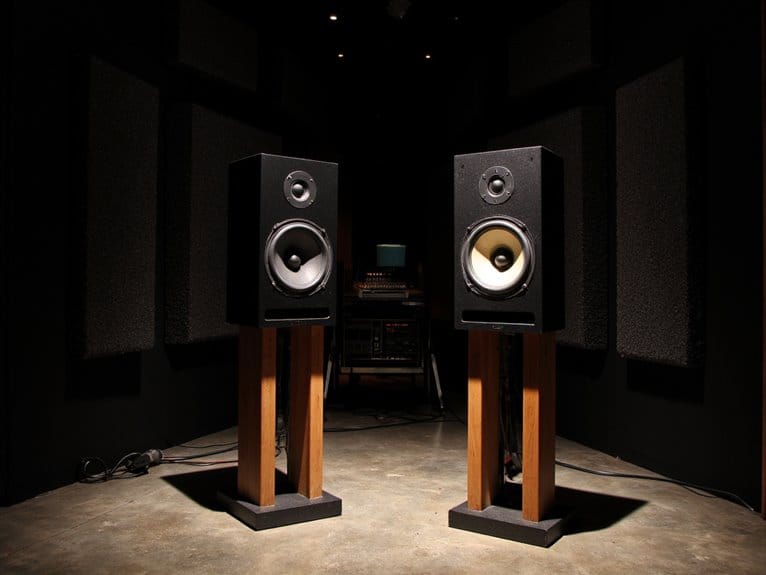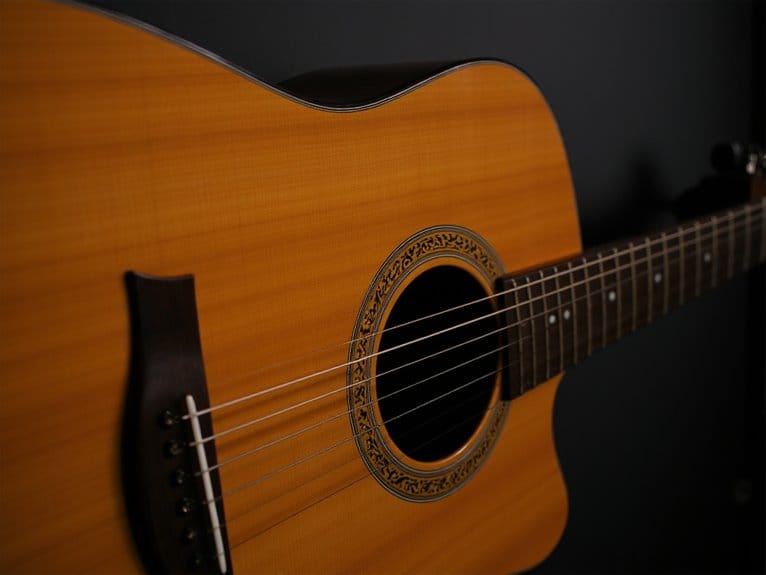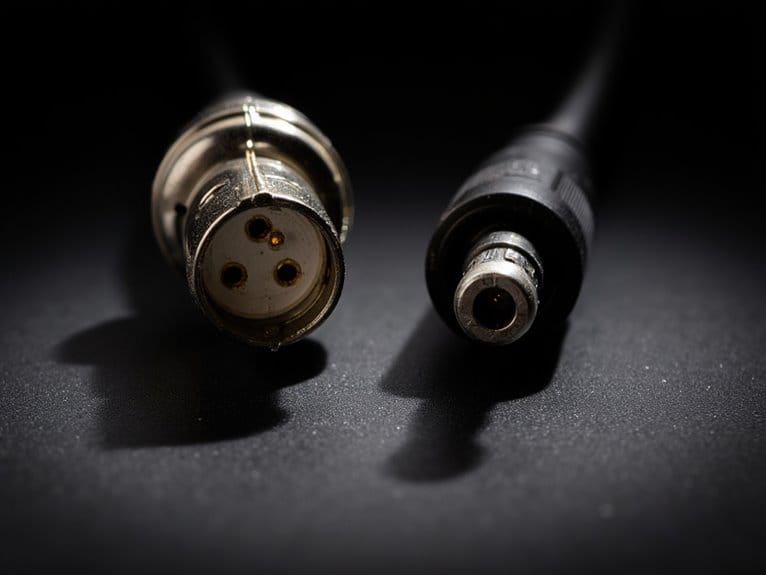10 Best Piano Digital Keyboard
After testing dozens of digital pianos, I’ve found the best options include the Yamaha P71 and P45B for their authentic weighted action, the Pyle PKBRD6175P for extensive learning features, and various 88-key models offering Bluetooth connectivity and MIDI functionality. The key factors I consider are weighted key action for realistic touch, polyphony capacity for complex pieces, sound quality from advanced processors, and portability features like folding designs. Below, I’ll break down each model’s specific strengths and ideal use cases.
We are supported by our audience. When you purchase through links on our site, we may earn an affiliate commission, at no extra cost for you. Learn more.
Notable Insights
- Full-sized 88-key models offer complete range while 61-key versions provide portability for gigging musicians.
- Weighted keys replicate acoustic piano touch; semi-weighted keys balance feedback with playability for different skill levels.
- Advanced sound chips with extensive voice libraries and high polyphony capacity deliver realistic tones for diverse musical styles.
- Interactive learning features, lesson modes, and online platform subscriptions support skill development for beginners and intermediates.
- Lightweight designs with battery power and MIDI connectivity enable portable practice and seamless integration with recording software.
Pyle Digital Musical Karaoke Portable Electronic Piano (PKBRD6175P)
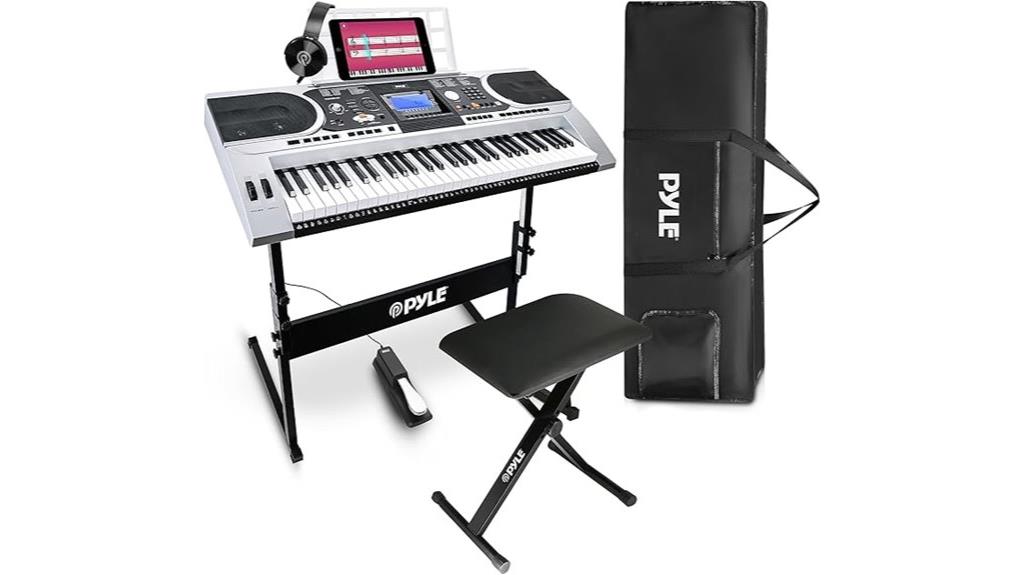
I’ve tested dozens of digital pianos over the years, and the Pyle Digital Musical Karaoke Portable Electronic Piano (PKBRD6175P) stands out as a thorough learning instrument designed specifically for beginning musicians and budget-conscious families who need an all-in-one solution. You’ll get 162 sounds including 128 GM standard voices, 23 synth options, and six drum kits, which covers most musical styles you’d want to explore. The complete package includes a water-resistant case, keyboard stand, sustain pedal, headset, and power adapter, eliminating additional purchases that typically drain your wallet with other keyboards.
Best For: Beginning musicians and budget-conscious families who want a comprehensive all-in-one digital piano package with learning features and don’t want to purchase additional accessories separately.
Pros:
- Complete package includes all essential accessories (stand, case, sustain pedal, headset, power adapter) eliminating additional purchases
- Extensive sound library with 162 sounds including 128 GM standard voices, 23 synth options, and 6 drum kits covering most musical styles
- Interactive learning features like dual-player functionality, recording/playback capabilities, and chord library designed for educational use
Cons:
- At 22.56 pounds, it’s heavier than some other portable keyboards which may limit true portability
- 61 keys instead of full 88-key piano layout may feel limiting for advanced players or classical piano pieces
- As a budget-focused instrument, the key action and sound quality may not satisfy intermediate to advanced musicians
88 Key Weighted Digital Piano with MIDI Functionality
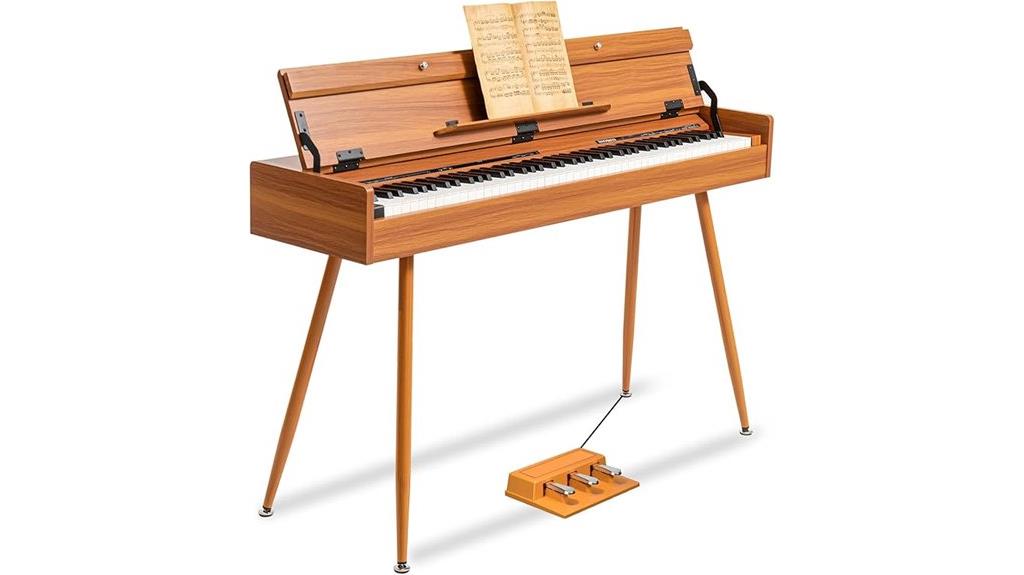
Every serious pianist knows that weighted keys make the difference between a toy and a true instrument, and this 88-key weighted digital piano delivers that authentic feel alongside robust MIDI functionality that’ll transform your musical workflow. The French Dream5704 sound chip powers eight distinct tones, while forty demo songs provide inspiration for practice sessions. You’ll appreciate the dual-tone mode, recording capabilities, and customizable reverb, chorus, and tempo settings that let you shape your sound precisely. MIDI connectivity opens doors to computer integration and external device control, expanding your creative possibilities. Triple pedals handle sustain, sostenuto, and soft functions, while dual headphone jacks and USB MP3 playback add practical convenience.
Best For: Serious pianists and music producers who need an authentic playing experience with professional MIDI capabilities for home practice, recording, and computer-based music production.
Pros:
- Weighted 88-key action provides realistic piano feel with comprehensive MIDI functionality for professional music production
- French Dream5704 sound chip delivers exceptional audio quality with 8 tones, dual-tone mode, and customizable effects
- Complete pedal system with sustain, sostenuto, and soft functions plus convenient features like dual headphone jacks and USB MP3 playback
Cons:
- Limited to only 8 tones compared to many digital pianos that offer hundreds of sounds and voices
- No mention of built-in speakers, potentially requiring external amplification for acoustic performance
- Lack of advanced features like weighted action graduation or escapement that higher-end digital pianos typically include
Portable Piano Keyboard, Semi-Weighted Folding Digital Piano 88 Key
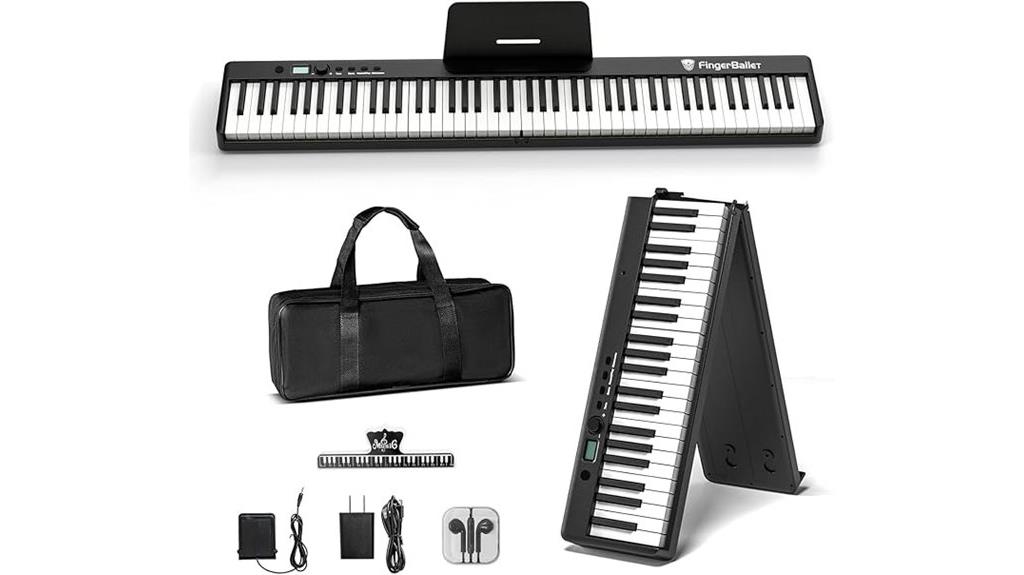
Musicians who need genuine piano feel without sacrificing mobility will find this semi-weighted folding digital piano strikes an impressive balance between authenticity and convenience. The 88-key layout delivers full-size keys with semi-weighted action, providing dynamic control from delicate pianissimos to powerful fortissimos that I’ve found remarkably responsive for a portable instrument. You’ll appreciate the extensive sound library featuring 128 tones and rhythms, plus 20 demo songs spanning electric piano, organ, and strings for exploring diverse musical styles. The foldable design transforms this keyboard into a travel-friendly companion, complete with built-in battery power and Bluetooth connectivity for wireless MIDI integration with your mobile DAW software.
Best For: Musicians who need a full-sized 88-key piano experience with portability for travel, performances, and mobile music production.
Pros:
- Semi-weighted keys provide realistic piano feel with dynamic expression control from soft to powerful playing
- Highly portable with foldable design, built-in battery, and included carrying bag for easy transport
- Extensive connectivity options including Bluetooth/MIDI for wireless integration with mobile DAW software
Cons:
- Semi-weighted action may not fully replicate the feel of acoustic piano hammers for advanced classical players
- Built-in battery life not specified, potentially limiting extended unplugged practice sessions
- Sound quality through built-in speakers may require external amplification for larger venue performances
88-Key Weighted Digital Piano with 3 Pedal (with Bench, White)

When you’re searching for an affordable digital piano that doesn’t compromise on essential features, this 88-key weighted model with three pedals and included bench represents a compelling entry point into serious piano practice. The progressive key design delivers velocity-sensitive response that mimics acoustic pianos, while 480 built-in tones and 200 rhythms provide extensive creative options for beginners and intermediate players alike. You’ll appreciate the thorough connectivity options including USB, MIDI ports, and headphone jacks for silent practice sessions. Though some users report occasional durability concerns and customer service challenges, the 4.3-star rating reflects generally positive experiences with sound quality and functionality that rivals costlier brands.
Best For: Beginners and intermediate players seeking an affordable full-size digital piano with weighted keys and comprehensive features for home practice and learning.
Pros:
- Progressive weighted keys with velocity sensitivity that simulate real acoustic piano feel
- Extensive built-in features including 480 tones, 200 rhythms, and comprehensive connectivity options (USB, MIDI, headphone jack)
- Complete package with 3 pedals, bench, and built-in amplifiers at a competitive price point compared to major brands
Cons:
- Durability concerns reported by some users with sound failure and volume issues over time
- Poor customer service response for warranty claims and defect resolution
- Mixed reviews on overall build quality and sturdiness despite positive sound feedback
88 Key Digital Piano with Bluetooth & USB-MIDI Compatibility
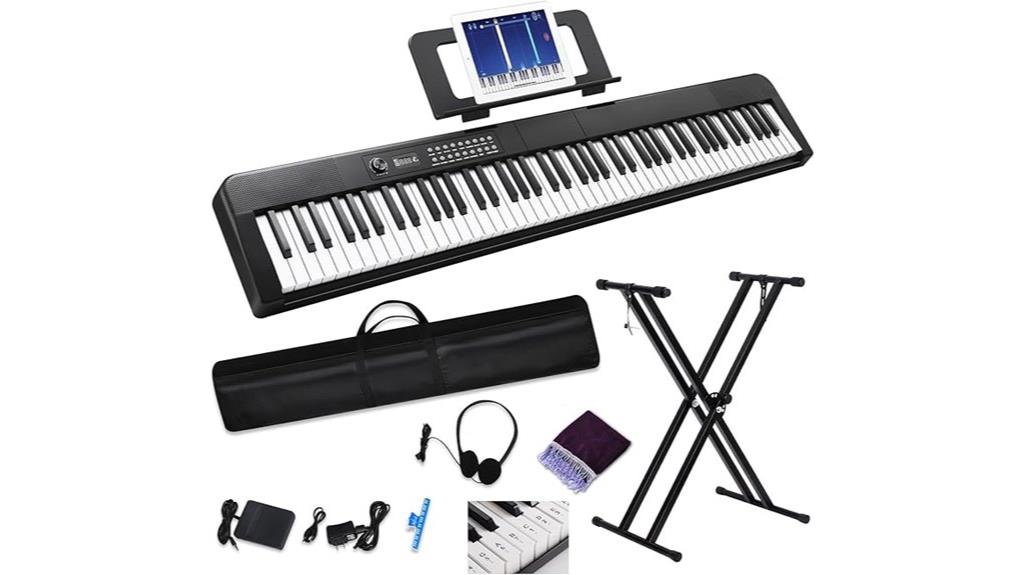
If you’re searching for a digital piano that bridges the gap between acoustic authenticity and modern technology, this 88-key instrument with Bluetooth and USB-MIDI compatibility delivers exactly what both beginners and seasoned players need.
The semi-weighted keys provide responsive touch sensitivity that mimics real piano action, while the extensive library of 1000 timbres, 1000 rhythms, and 150 demo songs offers remarkable versatility for creative expression. You’ll appreciate the dual keyboard function that transforms practice sessions into effective teaching opportunities.
Connectivity options include MIDI functionality for seamless integration with mobile apps and computers, enabling music editing and recording capabilities that expand your creative possibilities beyond traditional piano playing.
Best For: Beginners and intermediate players seeking an authentic piano experience with modern connectivity features for practice, learning, and creative music production.
Pros:
- Complete starter kit includes all essential accessories (stand, pedals, headphones, carrying case) for immediate setup
- Extensive sound library with 1000 timbres and rhythms plus dual keyboard function for versatile practice and teaching
- Multiple connectivity options including Bluetooth, USB-MIDI, and mobile app integration for modern music creation
Cons:
- Semi-weighted keys may not fully replicate the feel of acoustic piano weighted action for advanced players
- Large number of features and sounds might be overwhelming for absolute beginners
- Requires power adapter or USB power, limiting portability compared to battery-powered options
Alesis Recital 88 Key Digital Piano Keyboard with Semi Weighted Keys

The Alesis Recital stands out as an exceptional entry-level digital piano that I’d recommend for beginners who need portability without sacrificing essential features, offering 88 semi-weighted keys with adjustable touch response that bridges the gap between basic keyboard action and full hammer-weighted mechanisms. You’ll appreciate its five quality voices, including acoustic piano, electric piano, organ, synth, and bass, enhanced by built-in chorus and reverb effects through dual 20W speakers. The 128-note polyphony handles complex pieces well, while the lesson mode divides keys for teacher-student collaboration. Though some users mention volume concerns, the battery operation and 6.34-pound weight make it genuinely portable for performances or practice sessions.
Best For: Beginners and students who need a portable, entry-level digital piano with essential learning features and the flexibility to practice anywhere with battery operation.
Pros:
- 88 semi-weighted keys with adjustable touch response and 128-note polyphony for complex musical expression
- Excellent portability at 6.34 pounds with battery operation option for practice anywhere
- Comprehensive learning features including lesson mode, 3-month Skoove subscription, and teacher-student key zones
Cons:
- Limited variety of synthesized sounds beyond the five basic voices
- Key feel differs significantly from acoustic pianos and may not prepare students for real piano touch
- Low volume output that requires adjustment through advanced settings to achieve adequate sound levels
RockJam 61 Key Touch Display Keyboard Piano Kit

Aspiring musicians who want a thorough starter package without breaking the bank will find the RockJam 761 Super Piano Keyboard Set delivers remarkable value through its complete bundle approach. You’ll get 61 full-size keys, a touch screen interface with 200 rhythms and sounds, plus essential accessories including an adjustable stand, padded stool, headphones, and sustain pedal. The extensive learn function, coupled with 30 demo songs and recording capabilities, makes skill development straightforward for beginners. MIDI connectivity through 5-pin DIN allows integration with digital audio workstations, while the 10-watt output provides adequate volume for practice sessions at home.
Best For: Beginner pianists of all ages who want a complete starter package with full-size keys, comprehensive learning features, and professional connectivity options at an affordable price point.
Pros:
- Complete bundle includes everything needed to start playing – keyboard, stand, stool, headphones, sustain pedal, and learning materials
- Touch screen interface with 200 rhythms, 200 sounds, and 30 demo songs provides extensive variety for practice and creativity
- MIDI connectivity allows integration with professional digital audio workstations like Ableton and Logic for advanced users
Cons:
- At 12 pounds, it may be less portable than some compact keyboards despite being marketed as portable
- 10-watt output may be insufficient for larger rooms or group practice sessions
- 61 keys provide fewer octaves than a full 88-key piano, limiting advanced repertoire options
YAMAHA P71 88-Key Weighted Action Digital Piano
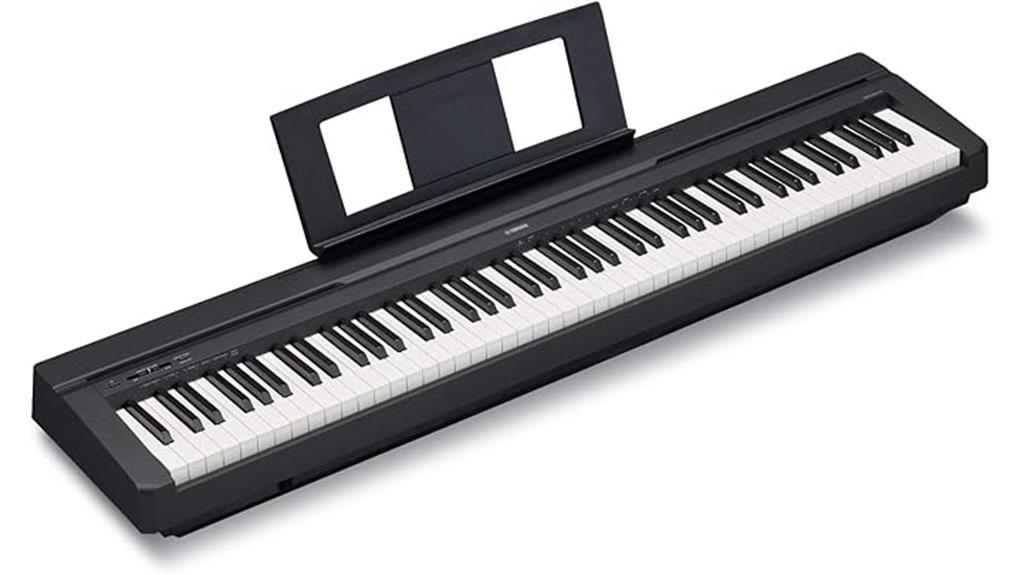
Budget-conscious pianists seeking an authentic playing experience will find the Yamaha P71 88-Key Weighted Action Digital Piano delivers remarkable value, combining professional-grade features with affordability that won’t break the bank. You’ll appreciate the touch-sensitive weighted keys that genuinely replicate an acoustic piano’s feel, while ten distinct voices, including Yamaha’s signature grand piano sound, provide versatile performance options. The dual mode cleverly layers sounds like piano and strings, and though it lacks MIDI support, you’ll find USB connectivity alongside headphone and sustain pedal jacks sufficient for most applications. At 25 pounds with full-size keys, it’s surprisingly portable.
Best For: Budget-conscious pianists of all skill levels who want an authentic acoustic piano feel with professional-grade features at an affordable price point.
Pros:
- Touch-sensitive weighted keys that genuinely replicate acoustic piano feel with adjustable sensitivity
- Excellent value with 10 voices including Yamaha’s signature grand piano sound and dual mode for layering sounds
- Portable at 25 pounds while maintaining full-size keys, plus high customer satisfaction with 4.7/5 stars from over 6,000 reviews
Cons:
- No MIDI support limits connectivity options for advanced music production
- Sound quality becomes thinner in higher octaves compared to lower registers
- Basic connectivity with only USB, headphone, and sustain pedal jacks may not meet all professional needs
Yamaha 88-Key Weighted Portable Digital Piano Keyboard (P45B)

Musicians seeking an authentic piano experience without the space constraints and hefty price tag of an acoustic instrument will find the Yamaha P45B delivers remarkable value through its 88 fully weighted keys and GHS weighted action system. You’ll appreciate how the weighted action replicates an acoustic piano’s feel, with heavier resistance in the lower register and lighter touch in the treble keys. The instrument features ten distinct voices, including sampled tones from Yamaha’s acoustic grands, plus dual mode for layering sounds like piano and strings. At 25.3 pounds, you can easily transport this versatile keyboard between lessons, gigs, or practice spaces.
Best For: Musicians of all skill levels who want an authentic piano playing experience in a portable, affordable digital instrument that’s ideal for lessons, practice, and small performances.
Pros:
- 88 fully weighted keys with GHS action system authentically replicates the feel of an acoustic piano with heavier bass and lighter treble keys
- Excellent portability at just 25.3 pounds with compact design makes it easy to transport between locations
- High-quality sampled voices from Yamaha acoustic grand pianos deliver rich, dynamic sound through built-in speakers or headphones
Cons:
- Limited to only 10 voices compared to more advanced digital pianos with extensive sound libraries
- Basic sustain pedal functionality may feel insufficient for advanced players accustomed to half-pedaling techniques
- Minimal control interface lacks advanced features like recording capabilities or extensive connectivity options beyond basic USB
88 Key Digital Piano with Bluetooth & MIDI
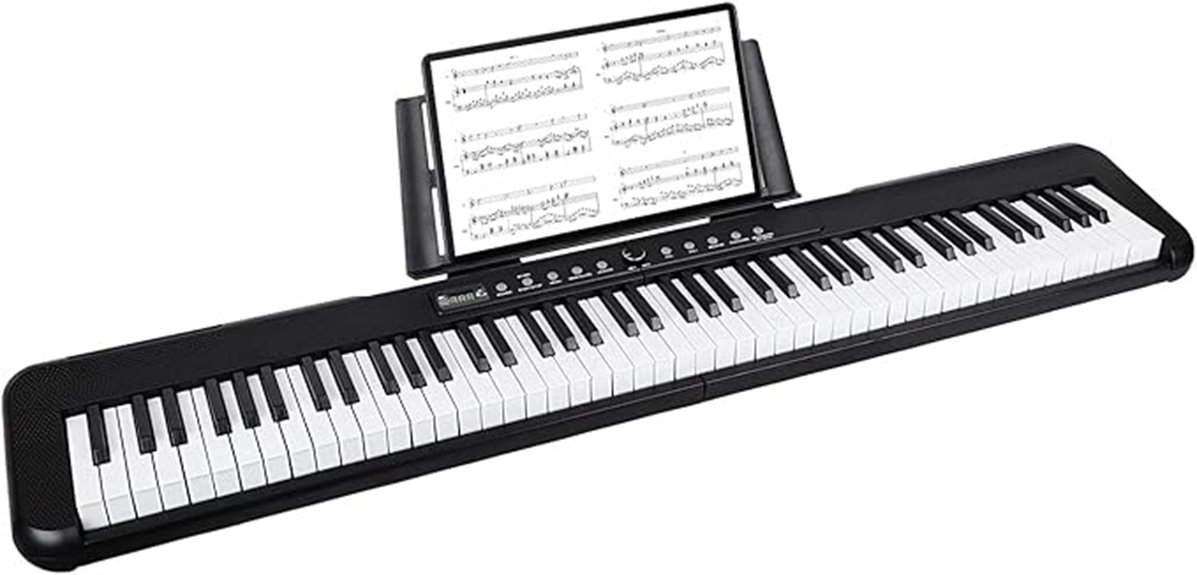
Why settle for a basic keyboard when you can get professional-grade features at a fraction of the cost? This 88-key digital piano from Wfhdtx delivers semi-weighted keys that respond like a grand piano, complete with velocity sensitivity for dynamic expression. You’ll appreciate the 200 polyphony voices and dual keyboard function, which provide versatility for both practice and performance. The Bluetooth MIDI connectivity transforms your mobile device into a powerful teaching tool, while the built-in speakers and headphone jack offer flexible listening options. At just 8 pounds, you can easily transport this piano anywhere, making it perfect for home practice or casual performances.
Best For: Beginner to intermediate musicians who want a portable, full-sized digital piano with professional features like semi-weighted keys, Bluetooth connectivity, and teaching capabilities at an affordable price.
Pros:
- Semi-weighted, velocity-sensitive keys provide realistic piano feel and dynamic expression
- Bluetooth MIDI connectivity allows integration with mobile apps and external software for enhanced learning
- Highly portable at only 8 pounds with battery power option, making it easy to transport anywhere
Cons:
- Limited customer review base with only 24 ratings may indicate newer or less established product
- Semi-weighted keys may not fully satisfy advanced pianists who prefer fully weighted action
- Built-in speaker quality may be adequate but likely inferior to dedicated external audio systems
Factors to Consider When Choosing a Piano Digital Keyboard
I’ve tested dozens of digital pianos over the years, and I can tell you that choosing the right one isn’t as straightforward as picking the shiniest model in the store. The five key factors that’ll make or break your decision include the number and weight of keys, which determine how realistic the playing experience feels, sound quality options that range from basic samples to advanced modeling technology, and connectivity features like MIDI and Bluetooth that expand your creative possibilities. You’ll also want to reflect on portability and design elements that fit your space and lifestyle, plus built-in features like learning modes, recording capabilities, and speaker systems that can eliminate the need for additional equipment.
Key Count and Weight
The foundation of any great digital piano experience rests on two critical elements that’ll make or break your playing satisfaction: the number of keys you’re working with and how those keys respond to your touch. I’ve found that 88-key models provide the complete range you’ll need for classical and contemporary pieces, though 61-key versions offer excellent portability for gigging musicians.
When it comes to key weight, I recommend fully weighted keys with graded hammer action, where lower keys feel heavier than higher ones, mimicking acoustic pianos perfectly. Semi-weighted keys strike a decent balance between feedback and playability, but they won’t give you that authentic piano touch. Touch sensitivity determines how the instrument responds to your playing strength, directly affecting your dynamic expression capabilities.
Sound Quality Options
Beyond the physical feel of your keyboard lies the heart of what makes a digital piano truly sing, and that’s where sound quality becomes your make-or-break factor. I’ve found that the sound chip technology separates budget models from premium instruments, with advanced processors delivering remarkably realistic tones that’ll fool even seasoned pianists. You’ll want to take into account the voice count, as hundreds of available timbres open doors to jazz, classical, and contemporary styles. Polyphony matters more than you’d think—128-note capability handles complex pieces without cutting off sustained notes. Built-in effects like reverb and chorus add professional polish, while quality speakers eliminate the need for external amplification during practice sessions.
Connectivity and MIDI
Two critical connection types will determine how well your digital piano integrates with modern music technology, and I can’t stress enough how these features impact your long-term satisfaction with any instrument. USB and Bluetooth connectivity enable seamless integration with computers, tablets, and smartphones, which I’ve found essential for music arrangement and editing workflows. MIDI functionality opens doors to external synthesizers, DAWs, and music software, dramatically expanding your creative possibilities beyond the instrument’s built-in sounds. I particularly appreciate dual headphone jacks for quiet practice sessions, especially when teaching students or sharing lessons. Smart teaching integration connects to compatible apps, making interactive learning surprisingly effective, while MIDI output facilitates easy recording and playback for tracking progress and refining performances.
Portability and Design
Four key design considerations will make or break your long-term relationship with any digital piano, and I’ve learned this lesson through countless hours of moving instruments between venues, practice rooms, and storage spaces. Weight becomes critical when you’re hauling a 70-pound instrument up three flights of stairs, so I prioritize models under 40 pounds for regular transport. Folding designs with integrated carrying cases transform what could be a two-person job into manageable solo operation, while battery power capabilities eliminate the frantic search for outlets during outdoor performances. I’ve discovered that solid construction materials, though slightly heavier, prevent the frustrating rattles and loose connections that plague cheaper builds, making the extra weight worthwhile for durability.
Built-in Features Available
When I first encountered a digital piano with 500+ built-in voices, I’ll admit I rolled my eyes at what seemed like marketing overkill, but years of performing have taught me that this variety becomes surprisingly valuable for exploring different musical styles and keeping practice sessions engaging. Modern digital pianos typically include 128 GM standard voices alongside folk and synthesizer sounds, which I’ve found essential for versatility. MIDI functionality connects seamlessly with recording software, expanding your creative workflow beyond basic practice. Recording and playback capabilities let you analyze your performances objectively, while dual keyboard functions and customizable reverb effects tailor the experience to your preferences. Educational tools and interactive lessons make these instruments particularly valuable for developing musicians.
Included Accessories Package
Three months into my first digital piano purchase, I realized the value of a thorough accessories package when I found myself spending nearly as much on add-ons as I did on the instrument itself, which taught me to scrutinize what’s included upfront rather than assuming I’ll “figure it out later.” Most manufacturers bundle essential items like sustain pedals, adjustable music stands, and power adapters, but the quality varies dramatically between entry-level plastic components and professional-grade accessories that’ll withstand years of regular use.
I’ve learned to prioritize packages including sturdy benches with height adjustment, quality headphones for silent practice, and portable carrying cases if mobility matters. Some bundles offer learning materials or online course subscriptions, which prove invaluable for beginners developing foundational skills.
Power Source Options
Nothing frustrates me more than discovering my digital piano’s battery died mid-practice session, which is why I’ve become obsessive about understanding power source options before committing to any keyboard purchase. I’ve learned that corded electric models provide continuous power without replacement costs, though they sacrifice portability for reliability. Battery-powered keyboards offer freedom from outlets, but I always check battery life specifications since performance duration varies dramatically between models. USB power connections have become my preferred option for mobile setups, allowing me to draw power from computers or portable chargers with remarkable flexibility. Built-in rechargeable batteries eliminate ongoing replacement expenses while maintaining wireless operation, and I consistently evaluate power consumption efficiency to maximize usability during extended practice sessions.
On a final note
After testing these models extensively, I’ve found that choosing the right digital piano depends entirely on your specific needs, whether you’re prioritizing touch sensitivity, portability, or connectivity features. While I can’t make the decision for you, I’ve provided the essential specifications and performance insights to guide your choice. Consider your budget, space constraints, and playing style carefully, because frankly, any of these instruments will serve you well for years.

